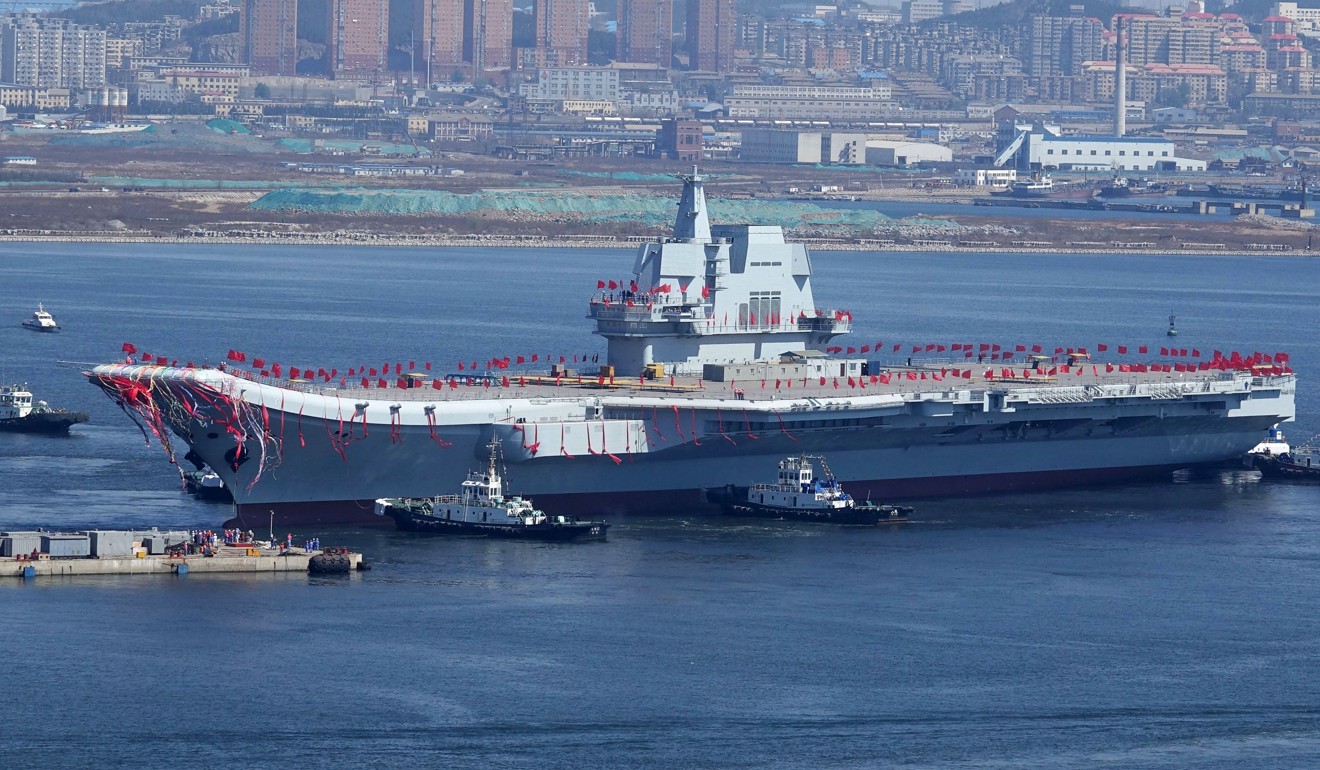How China’s new aircraft carrier can help get Beijing’s political messages across
Michal Thim says the Type 001A aircraft carrier will not be a game changer for the PLA Navy in military terms, but could excel in the role of carrying Beijing’s foreign policy

When China in 2012 put into service its refurbished Soviet-era aircraft carrier the Liaoning, it was apparent that if the People’s Liberation Army was serious about aircraft carrier capability, more vessels would follow. The launch of its first domestically built aircraft carrier, the Type 001A, is a step in that direction.
Aircraft carriers are not just unique power projection platforms, they are also handy foreign policy tools. The deployment of two US carrier strike groups towards the Taiwan Strait during the 1996 missile crisis is a case in point.
Not only did the US then present a military capability that the PLA could not match, it also sent a clear political message of American preference for keeping the status quo of Taiwan’s de facto independence.
Ironically, China has invested considerable resources in turning its adjacent waters into a hostile territory for US aircraft carriers by acquiring a large number of submarines, anti-ship cruise and ballistic missiles, and other components of what is called an anti-access/area-denial (A2AD) or counter-intervention strategy. And China’s neighbours took note. Taiwan, in particular, developed its own counter-intervention capabilities. Therefore, Chinese aircraft carriers are not particularly useful against Taiwan unless they are deployed outside the range of their A2AD capabilities.
Aircraft carriers give China’s navy the ability to project power farther from its shores
The PLA Navy has come a long way in the past few decades. China’s launching of its first aircraft carrier built from scratch is a milestone for its navy but no less so for its shipbuilding industry. However, prestige is not the only, or even the most important, motivation. China’s 2015 iteration of an active defence strategy moved its defensive perimeter from the Chinese coastline towards the open waters of the Pacific Ocean and across the South China Sea, and aircraft carriers give its navy the ability to project power farther from its shores and provide air protection for other surface vessels.

The question then is whether that would be acceptable to Beijing, or whether Chinese military planners aim to match what the US could conceivably deploy in the western Pacific. That said, while Beijing may set its sights on getting closer to the quality of the US model while having little need to build as many carriers as America does, the reality will in all likelihood be more modest.
The Liaoning could carry 24 J-15 fighter jets and the Type 001A just over 30 ... US aircraft carriers usually carry 70 planes
At first glance, the Type 001A is clearly a further development of the Liaoning, including the “ski jump” typical of Soviet/Russian carrier designs. Much has been said about the limitations of the current design that prevents China’s only carrier combat plane, the rather lightweight J-15 fighter jet, to carry a payload to its full potential – although some analyses suggest it is possible to launch J-15s with a full internal tank and maximum payload.
Nevertheless, what also matters is the total size of its air wing. According to expert estimates, the Liaoning could carry 24 J-15 fighter jets and the Type 001A just over 30.
In comparison, US aircraft carriers usually carry 70 planes (fighter jets, refuelling planes, airborne early warning aircraft), but have the potential to field close to 100.

It is clear that the combat value of China’s new aircraft carrier would fall well behind that of US Nimitz-class and Ford-class supercarriers. Its hypothetical deployment in Taiwan or Diaoyu Islands contingencies would inevitably put it outside the range of effective support from land-based aircraft and missiles, that is, in waters where the US Navy is in control and supported by allied nations.
Considering that the Liaoning’s primary purpose is training, the Type 001A will be the first vessel that will be fielded as a fully combat-capable carrier. By 2025, there is likely to be one more Type 001A carrier in the service.
For the reasons mentioned above, when the Type 001A finally enters service, it will not be a game changer for the navy in military terms.
However, even with limited military value, Beijing could still utilise its new carriers for “gunboat diplomacy” missions, deployment in regional natural disaster relief efforts, or goodwill port visits.
Smart naval diplomacy and carefully weighed deployment aimed at underscoring Beijing’s political messaging is an area where China’s new aircraft carriers could excel.
Michal Thim is a Taiwan analyst at the Prague-based think tank, Association for International Affairs, and a member of the Centre for International Maritime Security